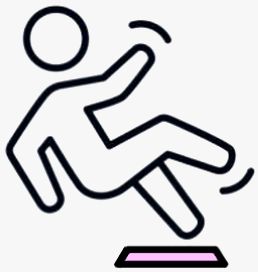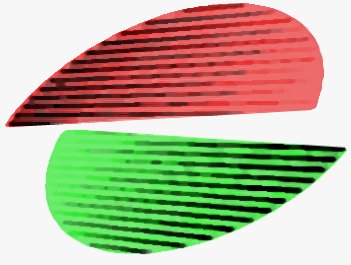Accredited InvestorsAltcoinAnatoli UnitskyAnti-Money Laundering (AML) In CryptoAPIArbitrageArtCoin TokenArticle DirectoryASICAuction Terminology GlossaryBasics of Stock Market InvestingBear MarketBest Crypto Payment Provider In the WorldBitcoinBlockchainBlockchain ConfirmationBlockchain Consensus MechanismBlockchain ForkBlockchain GlossaryBored Ape Yacht ClubBuild a Business That OutperformsBull MarketBuying SkyWay SharesByzantine Fault Tolerance (BFT) ExplainedCasascius CoinCentral Bank Digital Currency (CBDC)Centralized Crypto ExchangeCoinCoinsetCold WalletCollateralCommodity Futures Trading Commission (CFTC)Cross-Chain TechnologyCRUCrypto ExchangeCrypto GlossaryCrypto JokesCrypto Terms to KnowCrypto TickerCryptocurrencyCryptographyCryptojackingCryptounit BlockchainCryptounit GlossaryCryptounit ProgramdApp (Decentralized Application)Dead CoinDecentralized Exchange (DEX)Decentralized Finance (DeFi)Difference Between Bitcoin and EthereumDifferent Ways of Investing MoneyDigital CurrencyDistributed LedgerDo Your Own Research (DYOR)Dollar Cost Averaging (DCA)Dow Jones Industrial Average (DJIA)EncryptionERC-20ERC-721EthereumEvoScentFear Of Missing Out (FOMO)Fear, Uncertainty and Doubt (FUD)Fiat MoneyFNT Fintech CompanyGenesis BlockGlobal Unit PayGlossary of Banking TermsGlossary of Business TermsGlossary of Financial TermsHalvingHODLHot WalletHow Do I Start InvestingHow Rich is Satoshi Nakamoto?How to Create a BlockchainHow to Find Private InvestorsHow to Get Into FintechHow to Program Smart ContractsI Am Thrilled to Be a Part of This Global ProjectInitial Coin Offering (ICO)Initial Public Offering (IPO)Initial Token Offering (ITO)Innovation Basalt TechnologyInnovative Transportation TechnologiesInternational Bank Account Number (IBAN)Investing in Gold Mining StocksInvesting in Gold MiningJagerJoy of Missing Out (JOMO)Know Your Customer (KYC)LedgerLiquidity in CryptocurrencyMaker and Taker Fees in Crypto TradingMarket Capitalization (Market Cap)Meme CoinMetal Credit CardMetaMaskMillenials Now Have Access to Generational WealthMy Best Investment EverNew Digital EvolutionNFT GlossaryOff-Chain TransactionsOn-Chain TransactionsOpen Edition NFTPeer-to-Peer (P2P)Personal Loan GlossaryProbably the Best STO on the MarketProof of Stake (PoS)Real Estate Glossary of TermsReal Estate Investing GlossaryRebase TokenSecurities and Exchange Commission (SEC)Security Token ExchangesSecurity Token Offering (STO)Soulbound Decentralized Identities for Security TokensSoulbound ID Launch by Stobox Proves a SuccessSoulbound TokensStoboxStock Market GlossaryTestimonialsTether Platform and Token (USDT)UnitEx ExchangeUnitsky String TechnologiesUNTBUSDUValidatorWe Started Investing When We Were 25What are Blue Chip NFT?What are Blue Chip Stocks?What are Crypto Assets?What are Crypto Smart Contracts?What are CryptoPunks NFT?What are Digital Assets?What are Digital Collectibles?What are Gas Fees?What are Gas Wars?What are Hashmasks?What are Non Fungible Tokens?What are Non-Sufficient Funds (NSF)?What are Soulbound Tokens (SBT)?What are Stablecoins in Crypto?What are Transactions Per Second (TPS)?What are Utility NFTs?What are Utility Tokens?What Does Burning Crypto Mean?What Does Diamond Hands Mean?What Does Paper Hands Mean?What Does To The Moon Mean?What Does WAGMI Mean?What Happened to Satoshi Nakamoto?What is a 51% Attack?What is a Baby Boomer?What is a Backlink?What is a Banner?What is a Barcode?What is a Bid-Ask Spread in Crypto?What is a Block in Blockchain?What is a Block Reward?What is a Blockchain Address?What is a Blockchain Node?What is a Blockchain Oracle?What is a Blog?What is a Bond?What is a Bot?What is a Broker?What is a Business Accelerator?What is a Cash Cow?What is a Commercial Bank?What is a Commodity?What is a Con?What is a Credit?What is a Credit Limit?What is a Credit Rating?What is a Crypto Airdrop?What is a Crypto Bridge?What is a Crypto Scam?What is a Crypto Token?What is a Crypto Wallet?What is a Crypto Whale?What is a Crypto Winter?What is a Cryptocurrency Public Ledger?What is a Cryptocurrency Roadmap?What is a DAO?What is a Dark Pool?What is a Day Trader?What is a Dead Cat Bounce?What is a Default?What is a Derivative?What is a Digital Credit Card?What is a Fiscal Quarter?What is a Fungible Token?What is a Governance Token?What is a Grace Period?What is a Hard Fork?What is a Hot Wallet?What is a Hybrid Blockchain?What is a Hybrid PoW/PoS?What is a Joint Account?What is a Market Cap?What is a Merkle Tree in Blockchain?What is a Mining Farm?What is a Nonce? What is a PFP NFT?What is a POS System?What is a Prepaid Card?What is a Private Blockchain?What is a Private Key?What is a Public Blockchain?What is a Public Key?What is a Reserve Currency?What is a Ring Signature?What is a Routing Number?What is a Rug Pull in Crypto?What is a Safe Deposit Box?What is a Satoshi?What is a Security Token?What is a Seed Phrase?What is a Shitcoin?What is a Sidechain?What is a Soft Fork?What is a Spot Market?What is a State Bank?What is a SWIFT Code?What is a Tax Identification Number (TIN)?What is a Time Deposit?What is a Transaction Account?What is a Variable Interest Rate?What is a Virtual Assistant (VA)?What is a Virtual Card?What is a Virtual Currency?What is a Visa Card?What is a Whitelist in Crypto?What is a Whitepaper?What is Accounts Payable (AP)?What is AMA in Crypto?What is Amortization?What is an Accrual?What is an ACH Transfer?What is an Actuary?What is an Addendum?What is an Algorithm?What is an Angel Investor?What is an Annuity?What is an Asset?What is an ATM?What is an Atomic Swap?What is an Audit?What is an Avatar?What is an EIN?What is an Embargo?What is an Entrepreneur?What is an IDO (Initial Dex Offering)?What is an Interest Rate?What is an Internet cookie?What is an Investment Bank?What is an NFT Drop?What is an NFT Floor Price?What is an Ommer Block?What is an Orphan Block?What is an Outstanding Check?What is an Overdraft?What is Artificial Intelligence (AI)?What is B2B (Business-to-Business)?What is B2G (Business-to-Government)?What is Bartering?What is Bitcoin Dominance?What is Bitcoin Pizza Day?What is Blockchain Immutability?What is Blockchain Used For?What is BRICS?What is Business-to-Consumer (B2C)?What is C2C (Customer to Customer)?What is Capitalism?What is Catfishing?What is CFD Trading?What is Check Kiting?What is Cloud Mining?What is Communism?What is Content Marketing?What is Decentralization in Blockchain?What is DeFi in Crypto?What is Delisting?What is Depreciation?What is Digital Marketing?What is Diversification?What is Double Spending?What is Dumb Money?What is Dumping?What is Earnings Per Share (EPS)?What is Economics?What is Email Marketing?What is Equity?What is Etherscan?What is Fintech?What is Foreign currency?What is Forex?What is Fundamental Analysis (FA)?What is GameFi?What is Generative Art NFT?What is Gwei?What is Hard Currency?What is Hash Rate?What is Hashing in Blockchain?What is Inflation?What is Initial Game Offering (IGO)?What is Interest?What is Interest Income?What is Mainnet?What is Mastercard?What is Metaverse in Crypto?What is Mining in Cryptocurrency?What is Minting NFT?What is Mobile Banking?What is Money Laundering?What is NFT Alpha?What is NFT Metadata?What is NFT Rarity?What is NGMI Meaning?What is Nominal Interest Rate?What is Online Banking?What is Open-End Credit?What is OpenSea NFT Marketplace?What is Personal Identification Number (PIN)?What is Play-to-Earn?What is Polygon?What is Proof of Authority (PoA)?What is Proof of Work (PoW)?What is Public Key Cryptography?What is Pump and Dump?What is Quantum Computing?What is Refinancing?What is Retail Banking?What is Ripple?What is Sharding?What is Slippage in Crypto?What is Smart Money?What is Solvency?What is Soulbound ID?What is SSL?What is Staking in Cryptocurrency?What is Technical Analysis (TA)?What is Testnet?What is the Ask Price?What is the Better Business Bureau (BBB)?What is the Bid Price?What is the Dark Web?What is the InterPlanetary File System (IPFS)?What is the Gold Standard?What is the Lightning Network?What is the Prime Rate?What is the Sandbox?What is the Secondary Market?What is the World Bank?What is Tier 1 Capital?What is Tokenomics?What is TRC-20?What is Universal Banking?What is Unspent Transaction Output (UTXO)?What is Usury?What is Volatility in Crypto?What is Wash Trading?What is Web3?What is Whisper?What is XRP?What is Zero-Knowledge Proof (ZKP)?Who is Beeple?Who is Satoshi Nakamoto?Who is Vitalik Buterin?Why Tokenization is a Safe HavenWhy You Should Try Your Hand at Trading
What is Slippage in Crypto?
- Home
- Crypto Glossary
- What is Slippage in Crypto?
Consider this scenario: you walk into a toy store and see a popular toy on sale for $20. You decide to buy it and proceed to the checkout. However, the cashier informs you that the actual price is $25, not $20 as advertised.

While such occurrences are impossible in physical stores, they happen frequently in the world of cryptocurrency exchanges. Cryptocurrency traders expect their buy or sell orders to execute at the price they've agreed upon. Unfortunately, sometimes the transaction happens at a different price, and this is referred to as slippage.
What is Slippage in Crypto?
Slippage in cryptocurrency refers to the difference between the expected price of a crypto asset and the actual price at which the trade is executed. There are two primary reasons why slippage can occur in the world of cryptocurrency: liquidity and volatility.
When cryptocurrencies experience rapid price changes due to frequent trading, they are considered volatile. In this situation, slippage can occur due to wild price swings, resulting in a trading order being executed at a different price than expected. Cryptocurrencies are speculative instruments, and a single headline or tweet can trigger a significant increase or decrease in price.
The lack of liquidity in some cryptocurrencies can also lead to slippage. Some cryptocurrencies are popular and frequently traded, while others are not traded very often due to their newness or lack of popularity. This can cause a significant difference between the lowest ask and the highest bid, leading to dramatic changes in price as an order is entered and executed.
Illiquid assets cannot easily be converted to cash, and cryptocurrencies that are not popular have limited buyers, leading to slippage. If there are no willing buyers, a seller may have to hold onto their cryptocurrency longer than anticipated, and the eventual price a buyer is willing to pay may be lower than what the seller wants to sell for. This lack of buyers can result in a sudden jump in the market price due to a single transaction.
What is Slippage Tolerance?
Slippage tolerance is the max price difference a trader accepts between expected and actual execution price. It's crucial in volatile markets like cryptocurrencies. A low tolerance can miss opportunities, while a high one can cause big losses. It varies based on strategy, risk appetite, and market conditions. Traders use stop-loss orders to manage risk by closing positions at a certain price level.
Positive Slippage vs Negative Slippage
Positive slippage occurs when a trade is executed at a better price than expected, resulting in additional profits for the trader.
In contrast, negative slippage occurs when a trade is executed at a worse price than expected, resulting in reduced profits or even losses for the trader. Understanding the concept of slippage and how to manage it is crucial for successful trading.
How to Avoid Crypto Slippage
There are several strategies that traders can use to avoid slippage and execute trades at the expected price.
- Use limit orders: Limit orders allow traders to specify the maximum price they are willing to pay for a cryptocurrency when buying or the minimum price they are willing to receive when selling. This helps to ensure that trades are executed at the desired price, and slippage is minimized.
- Monitor market conditions: Traders should keep an eye on the market conditions and be aware of any news or events that could cause price fluctuations. By staying informed, traders can adjust their trading strategies accordingly and avoid unexpected slippage.
- Avoid trading during high volatility: High volatility is one of the primary causes of slippage in the cryptocurrency market. Traders can avoid slippage by avoiding trading during periods of high volatility or by setting a higher slippage tolerance level during these periods.
- Use stop-loss orders: Stop-loss orders can help traders manage risk and limit potential losses in case of unexpected price movements. By setting a stop-loss order, traders can automatically close their position when the price reaches a certain level, thus minimizing slippage and potential losses.
- Choose a reputable exchange: Traders should choose a reputable exchange with high liquidity to minimize slippage. A high liquidity exchange ensures that there are enough buyers and sellers to execute trades at the desired price.
- Practice good risk management: Traders should always practice good risk management by diversifying their portfolio, setting stop-loss orders, and avoiding trading with more than they can afford to lose. This can help to minimize losses and avoid unexpected slippage.
Related Articles

What is a Bid-Ask Spread in Crypto?
This difference between the expected and actual price is known as slippage. Slippage can occur in both bullish and bearish market conditions and is especially prevalent in...

What is Volatility in Crypto?
Secondly, the presence of whales, individuals or groups that hold a large amount of a particular cryptocurrency, can cause market volatility. When whales hold their...

Liquidity in Cryptocurrency
Liquidity is important because it enables traders to enter and exit a position with minimal slippage, which is the difference between the...
- Home
- Crypto Glossary
- What is Slippage in Crypto?